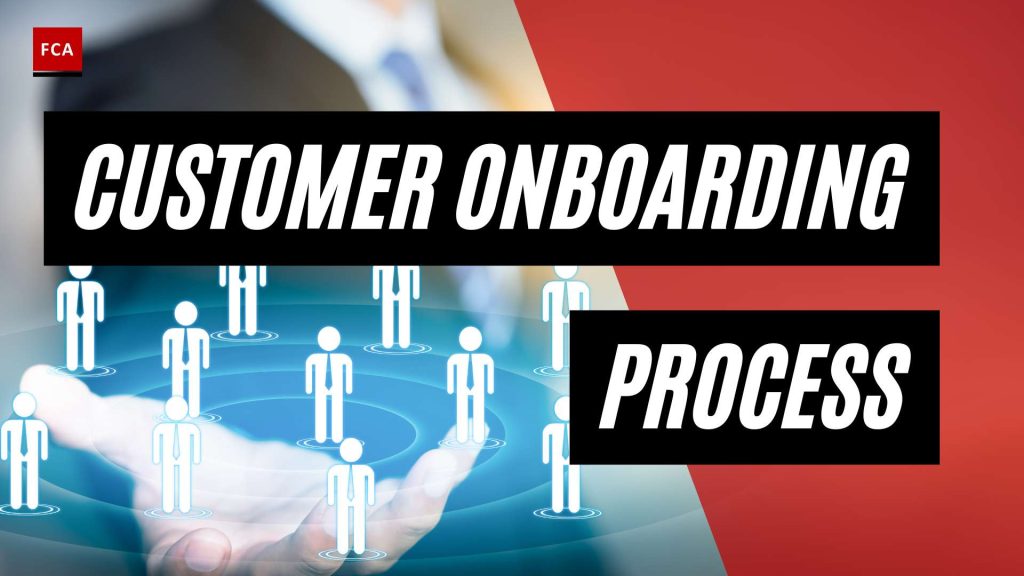The Importance of Customer Onboarding
When it comes to the success of a business, the customer onboarding process plays a crucial role. It involves the series of steps taken to welcome and integrate new customers into your products or services. By prioritizing a seamless onboarding experience, businesses can enhance the overall customer experience, foster customer retention, and drive profitability.
Enhancing the Customer Experience
According to Help Scout, 80% of customers believe that the experience a company provides is as important as its products and services. In today’s competitive landscape, where customers have numerous options to choose from, ensuring a positive onboarding experience is essential for standing out from the crowd. A well-designed onboarding process sets the tone for the customer’s relationship with the company, making them feel valued and supported from the start.
By guiding customers through the initial stages of their journey, businesses can help them understand the value of their products or services. Clear and concise communication, personalized interactions, and proactive support during the onboarding phase contribute to an overall positive customer experience. This positive experience sets the foundation for a long-lasting and fruitful relationship.
Impact on Customer Retention and Profitability
The customer onboarding process has a direct impact on customer retention rates. In a study conducted by the International Data Corporation (IDC), it was found that slow onboarding processes lead to more than 30% of customers abandoning a product (Help Scout). When customers face hurdles or experience a lack of guidance during onboarding, they may become frustrated and seek alternative solutions.
On the other hand, an effective onboarding process can increase customer lifetime value. Research shows that increasing customer retention rates by just 5% can lead to an increase in profits of between 25% to 95% (Help Scout). By making customer onboarding seamless, companies can reduce customer churn and build customer loyalty. This, in turn, can lead to a higher customer lifetime value and increased profits.
Investing in a well-designed and efficient onboarding process is not just about acquiring new customers, but also about nurturing and retaining them. By providing a positive onboarding experience, businesses can establish a strong foundation for long-term customer relationships, driving growth and success.
In the next section, we will explore the key challenges that businesses often face during the customer onboarding process and discuss best practices for effective onboarding to overcome these challenges.
Key Challenges in Customer Onboarding
Customer onboarding is a critical process that sets the foundation for a positive customer experience and long-term retention. However, there are several key challenges that businesses often face during this crucial stage. It is important to address these challenges to ensure a smooth and effective onboarding process. The top five challenges in customer onboarding include:
Unclear Value Proposition
One of the main challenges in customer onboarding is the lack of a clear value proposition. Customers need to understand the unique benefits and value that a product or service offers to them. Without a clear value proposition, customers may struggle to see the relevance of the product or service to their needs. It is essential for businesses to articulate their value proposition clearly, highlighting how their offering solves customer pain points and improves their lives. By providing a compelling value proposition, businesses can effectively engage customers from the start and increase their chances of long-term satisfaction and loyalty.
Ineffective Training
Inadequate or ineffective training is another common challenge in customer onboarding. Customers need proper guidance and education on how to use a product or service effectively. Without comprehensive training, customers may feel overwhelmed or unsure about how to maximize the value of their purchase. To address this challenge, businesses should invest in providing clear and concise training materials, both in written and visual formats. This can include user manuals, video tutorials, and interactive demonstrations. By offering effective training, businesses can empower customers to fully utilize the product or service, leading to higher satisfaction and success.
Lack of Personalized Communication
Personalized communication is key to building a strong relationship with customers during the onboarding process. However, many businesses struggle to personalize their communication effectively. Customers expect tailored and relevant information that addresses their specific needs and preferences. Businesses should leverage customer data and segmentation to deliver personalized messages, offers, and recommendations. By understanding customers on an individual level, businesses can create a more engaging and meaningful onboarding experience, enhancing customer satisfaction and loyalty.
Absence of Customer Success Guidance
Customer success guidance is vital to help customers achieve their desired outcomes. Without proper guidance and support, customers may struggle to navigate the product or service, leading to frustration and dissatisfaction. Businesses should provide proactive customer success guidance, offering resources, assistance, and best practices that enable customers to achieve their goals. This can include offering dedicated customer success managers, access to a knowledge base, and a community forum where customers can connect and learn from each other. By providing ongoing support and guidance, businesses can foster a sense of trust and ensure customers achieve maximum value from their purchase.
Inadequate Data Management
Effective data management is crucial for a successful customer onboarding process. Businesses need to collect and manage customer data in a secure and organized manner. Without proper data management practices, businesses may struggle to track customer progress, personalize communication, and identify areas for improvement. It is important to invest in robust data management systems and processes, ensuring data accuracy, privacy, and accessibility. By harnessing the power of data, businesses can gain valuable insights into customer behavior and preferences, enabling them to optimize the onboarding process and drive customer success.
Addressing these key challenges in customer onboarding is essential for businesses to provide a seamless and engaging experience for their customers. By articulating a clear value proposition, providing effective training, personalizing communication, offering customer success guidance, and implementing strong data management practices, businesses can enhance the onboarding journey and increase customer satisfaction and retention.
Best Practices for Effective Customer Onboarding
To ensure a successful and seamless customer onboarding process, businesses should implement best practices that focus on articulating the value proposition, providing effective training, personalizing communication, offering customer success guidance, and improving data management. By following these practices, businesses can enhance the onboarding experience and increase customer retention.
Articulating the Value Proposition
During the onboarding process, it is crucial to clearly communicate the value proposition of the product or service. Customers need to understand how the offering addresses their pain points and provides solutions. By effectively articulating the value proposition, businesses can set the right expectations and establish a strong foundation for a long-term relationship. This helps build trust and ensures that customers realize the benefits of their investment.
Providing Effective Training
Comprehensive and effective training is essential for customers to understand how to utilize the product or service to its fullest potential. By offering clear and concise training materials, businesses can empower customers to navigate the features and functionalities. This can be achieved through user-friendly documentation, video tutorials, interactive demos, or even personalized training sessions. Providing ongoing support and resources post-onboarding is also crucial for continued success.
Personalizing Communication
Personalization plays a significant role in creating a positive onboarding experience. By tailoring communication to each customer’s specific needs and preferences, businesses can make customers feel valued and understood. Personalized emails, welcome messages, and targeted content can help customers feel connected to the brand and foster a sense of loyalty. Utilizing customer data and segmentation can enable businesses to deliver relevant information and guidance throughout the onboarding journey.
Offering Customer Success Guidance
Customer success guidance involves proactively supporting customers in achieving their desired outcomes. By providing guidance, businesses can help customers overcome challenges and maximize the value they derive from the product or service. This can include regular check-ins, progress tracking, and access to a dedicated customer success team. By being invested in the customer’s success, businesses can foster long-term relationships and drive customer loyalty.
Improving Data Management
Effective data management is crucial for a streamlined onboarding process. By implementing robust data management practices, businesses can ensure that customer information is accurate, up-to-date, and easily accessible. This includes securely storing customer data, maintaining a centralized database, and employing data analytics to gain insights into customer behavior. With better data management, businesses can personalize the onboarding experience and make data-driven decisions to enhance customer satisfaction.
By implementing these best practices, businesses can optimize the customer onboarding process and set a solid foundation for long-term customer success. Articulating the value proposition, providing effective training, personalizing communication, offering customer success guidance, and improving data management are key steps toward achieving a seamless and impactful onboarding experience.
The Role of Automation in Customer Onboarding
Automation plays a vital role in optimizing the customer onboarding process, offering several benefits to both businesses and customers. By leveraging automation, organizations can transform manual processes, streamline workflows, and enhance the overall onboarding experience. Let’s explore the key aspects of automation in customer onboarding.
Transforming Manual Processes
Traditionally, customer onboarding involved manual tasks and paperwork, which often resulted in inefficiencies and delays. However, by embracing automation, companies can significantly improve the efficiency and effectiveness of their onboarding processes. According to HBR, digitizing customer onboarding processes can result in a 25% faster time-to-revenue, increasing organizational efficiency and accelerating growth.
Automation eliminates the need for manual data entry, reducing the likelihood of errors and improving data accuracy. It also enables organizations to centralize and organize customer information, making it easily accessible for both internal teams and customers themselves. This transformation from manual to automated processes helps streamline operations and enhance the overall onboarding experience.
Automating Initial Data Collection
One critical aspect of customer onboarding is collecting the necessary information and documentation from customers. Automation can simplify this process by providing digital forms and interfaces for customers to submit their details electronically. By automating initial data collection, companies can potentially reduce customer onboarding times from weeks to just days, ensuring a seamless and efficient experience for customers, as mentioned by HBR.
Automated data collection also enhances data security by reducing the risk of errors, fraud, and data breaches. With proper encryption and data protection measures in place, sensitive customer information remains safeguarded throughout the onboarding journey.
Streamlining Task Scheduling and Workflow
Automation enables organizations to streamline task scheduling and workflow, ensuring that each step of the onboarding process is completed efficiently. By automating workflows, companies can set up predefined sequences of tasks, notifications, and reminders, creating a systematic and consistent onboarding experience.
For example, automated notifications can be sent to customers to update them on the progress of their onboarding, request any missing information, or provide important instructions. This proactive communication helps keep customers engaged and informed throughout the onboarding process.
Balancing Automation and Human Interaction
While automation brings numerous benefits to customer onboarding, it’s important to strike a balance between automation and human interaction. While some tasks can be effectively automated, personalized interactions with customers are still crucial for building trust and addressing individual needs.
Organizations should identify touchpoints where human interaction is essential, such as answering complex questions, providing guidance, or addressing specific concerns. By combining automation with personalized human support, companies can create a customer onboarding experience that is efficient, scalable, and tailored to each customer’s requirements.
By leveraging automation, businesses can transform their customer onboarding processes, streamline workflows, and deliver a superior onboarding experience. Automation reduces manual efforts, enhances data accuracy, and allows organizations to focus on building strong customer relationships. By embracing the role of automation in customer onboarding, companies can set themselves up for sustainable growth and success.
For more information about customer identification and verification, visit our article on customer identity verification.








